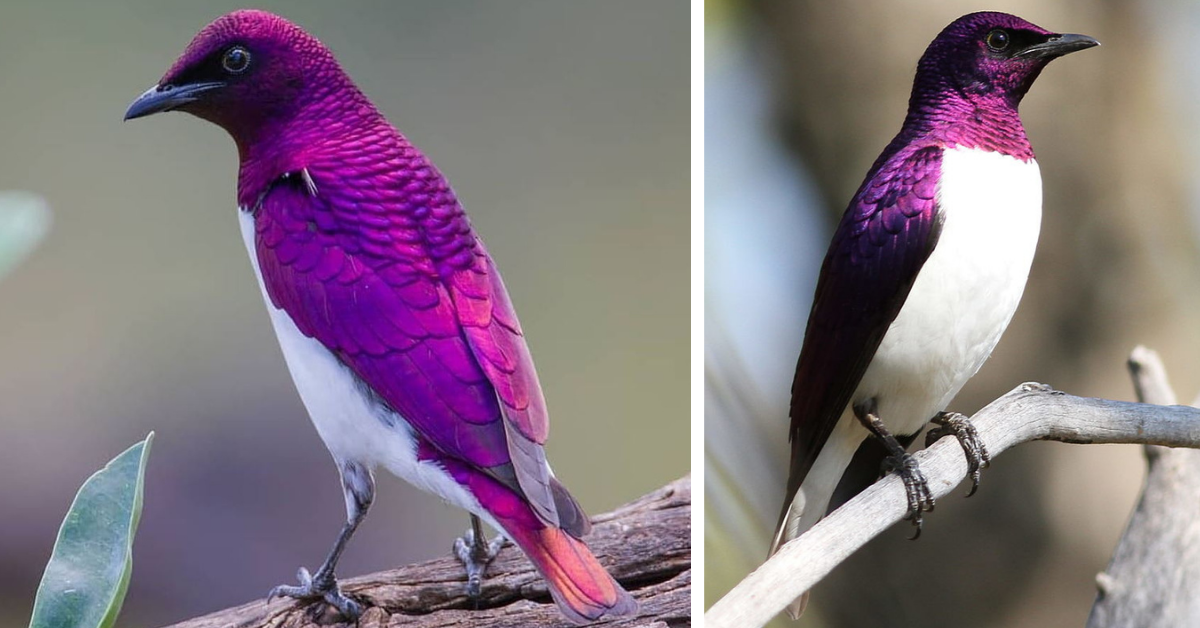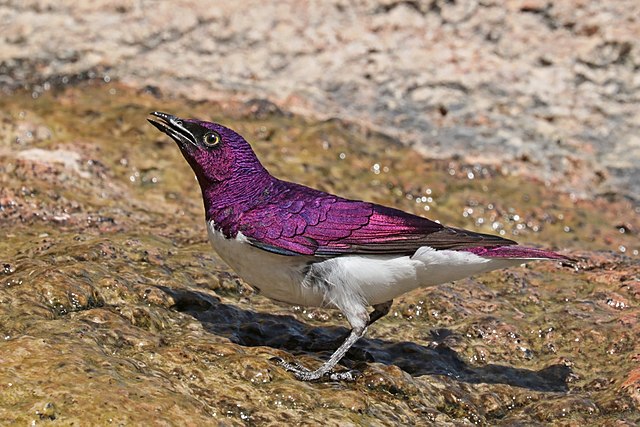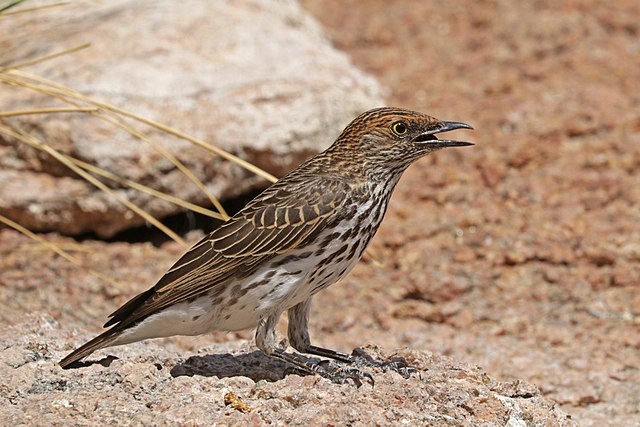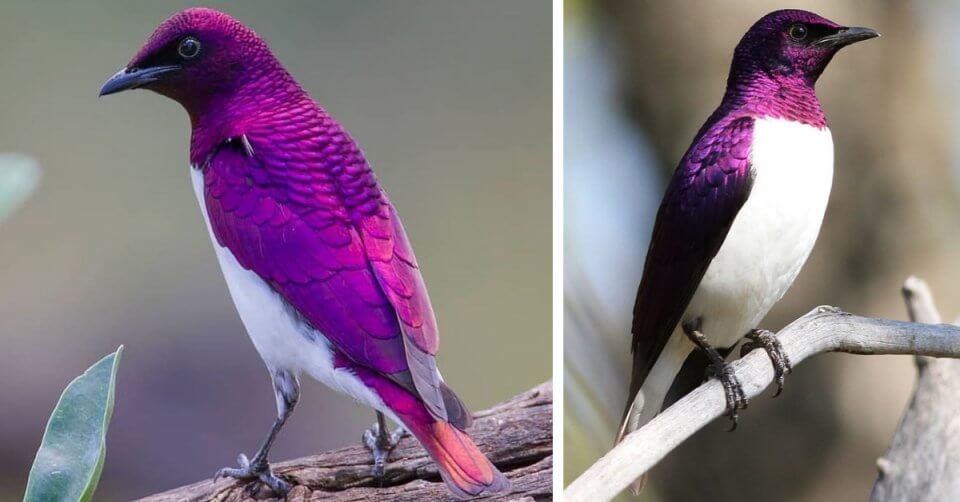IN FACT, THE TWO SEXES OF THIS SPECIES COULDN’T LOOK ANY MORE DIFFERENT IF THEY TRIED!

While the male wears his violet-toned suit with pride the female tends to blend into her environment making her harder to find.
MEET THE VIOLET-BACKED STARLING

Photo Courtesy of Charles James Sharp / CC BY-SA 4.0
The male’s violet back contrasts nicely with his white belly and vent. While the female and juveniles of this species have brown and white streaked bellies, looking more like a thrush. All, however, share the distinctive dark bill and yellow eyes.

Photo Courtesy of Charles James Sharp / CC BY-SA 4.0
This species can be found throughout much of Sub-Saharan African, preferring to stay away from the dense rainforest of the Congo Basin, and more arid parts of the region.
It is commonly seen in forests and forest verges, or in open woodland and clearings.

Photo Courtesy of Derek Keats / CC BY-SA 2.0
In these areas, the Violet-backed starling feeds predominantly on seeds, fruits, berries, and arthropods, mainly in the tree canopy. In fact, they are an important dispersal agent for mistletoe plants.

Photo Courtesy of Instagram/birdsonearth
Mainly a migratory bird, though some areas do have resident birds, the female will build her nest two meters off the ground, usually in the fork of a tree. The nest is made out of green leaves and animal dung. She then incubates a clutch of two to four eggs, blue with reddish/brown spots, for 12-14 days.

Photo Courtesy of Derek Keats / CC BY-SA 2.0
She’s not left to do all the work on her own though, as the male will help feed the chicks until they are fully fledged at about 21 days old.

Photo Courtesy of Instagram/nature
Thankfully the population of this stunning bird is not thought to currently be at risk.

Photo Courtesy of Instagram/amnh
YOU CAN LISTEN TO THE SONG OF THIS BEAUTIFUL BIRD BELOW:
Source: One Big Birdcage

